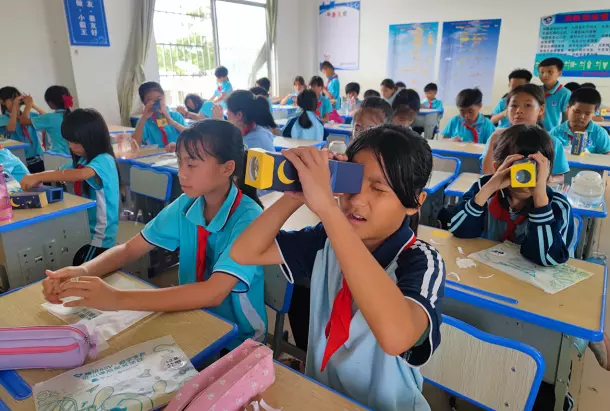By Ma Ruishan, People’s Daily
Liang Pingping, a resident of Hanzhuang village, Fangshan county, north China’s Shanxi province, laid pale-faced on herbed. Village doctor Chen Yan took out an electrocardiogram device from his diagnostic kit to examine her. Through real-time data transmitted to a remote screen, Beijing-based specialist Feng Pu quickly advised: “Get to a major hospital for a cardiac enzyme test immediately!” Thanks to the timely diagnosis, the patient made a full recovery.
This diagnosis was facilitated by a “Mobile Hospital” initiative, jointly launched by Fangshan county and the China Primary Health Care Foundation. The project equips every rural doctor in the county with a diagnostic kit, enabling remote expert consultations and comprehensive checkups. It supports early disease detection and remote guidance for emergency care.
So far, all 90 village clinics in Fangshan have conducted more than 16,000 remote consultations, serving over 370,000 patients, covering 53% of the county’s permanent population. The initiative has saved patients nearly 10 million yuan in medical and travel expenses.
Since its launch in 2018, the “Mobile Hospital” has been rolled out across multiple provinces, benefiting more than 20 million people.
How does this initiative bring about a big leap in primary healthcare in Fangshan?
It offers good experience by setting up a dispatch platform. When patients scan a code to request medical service, the platform assigns the closest village doctor based on location, ensuring full coverage for every village.
It mobilizes resources from all sides. The program provides free access to remote consultation with top-tier specialists from renowned hospitals in Beijing, Shanghai and other cities. Village doctors can initiate video consultations, significantly lowering both time and cost for patients.
It comes with robust incentive mechanisms. The local government has created a special fund to reward village doctors who detect early signs of serious illness. This encourages them to conduct proactive home visits, reinforcing village clinics as the frontline of rural health protection.
Healthcare is a fundamental pillar of people’s well-being, and having quality care available close to home is a basic yet important wish for millions of patients.
In recent years, China has worked to reorient the focus of its healthcare system toward the grassroots level through policies like hierarchical diagnosis and treatment system and the development of medical consortium. These efforts have helped ease problems such as uneven distribution of medical resources and weak primary care capacity.
Leveraging telemedicine partnerships and digital technologies to deliver embedded services has increasingly proven to be both effective and practical for expanding access to quality care.
The benefits of data integration and resource sharing go well beyond healthcare.
At Shihezi University in northwest China’s Xinjiang Uygur autonomous region, students conduct analog electronics experimentsthrough remote laboratory accesswith Xidian University in Xi’an, northwest China’s Shaanxi province. At Henan Agricultural University in central China’s Henan province, an online collaboration platform links experts, provides training, and connects farmers to markets—allowing growers hundreds of kilometers away to receive customized technical advice through “screen-to-screen” interaction.
Whether it’s access to education, elder care, early childhood development, or medical treatment, China’s digital and intelligent technologies are bearing fruit, broadening the reach and equity of quality public services.













